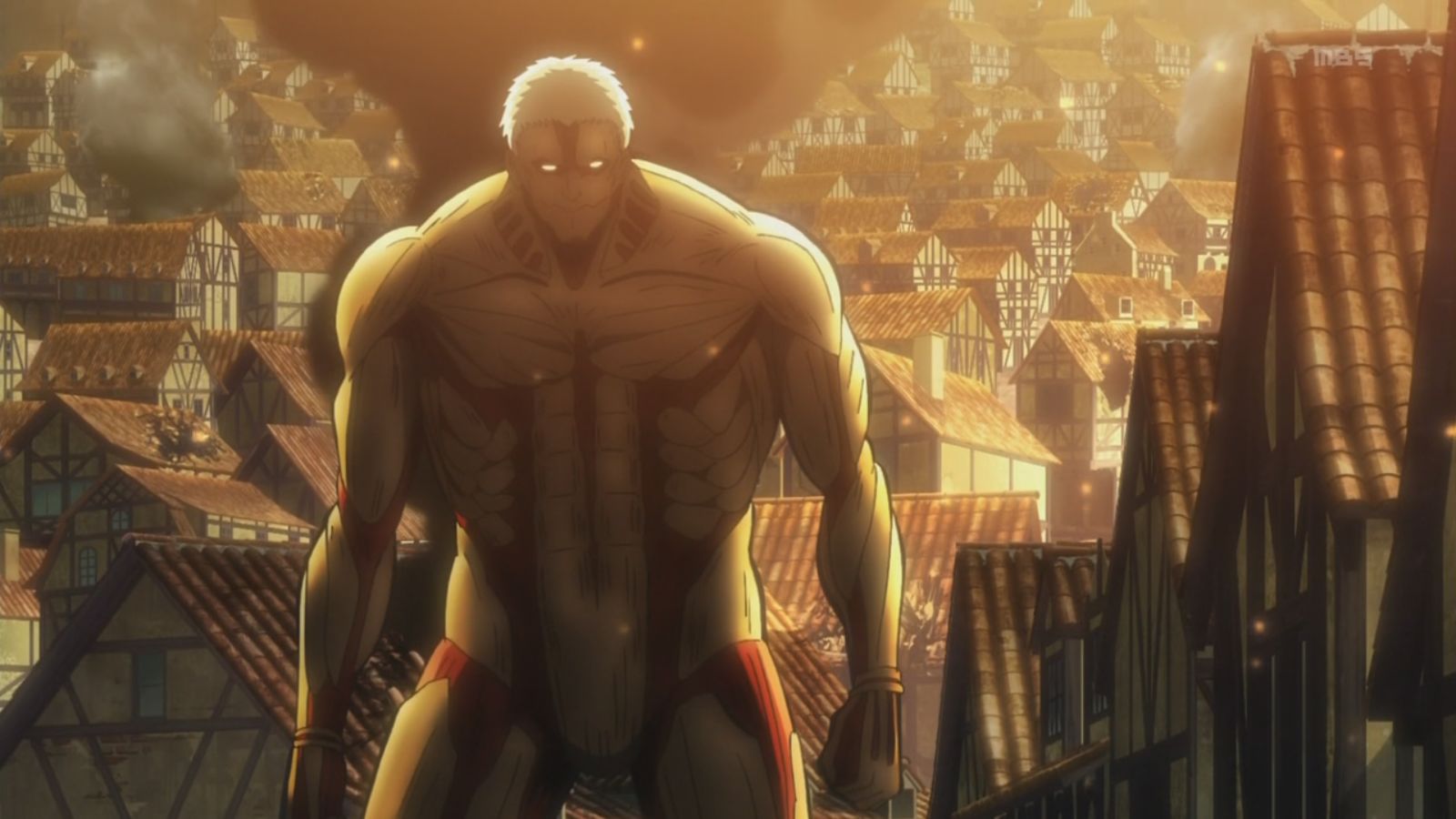—
Attack on Titan - Season 1 (2013)

After hearing a load of praise from both friends and critics about Attack on Titan, I finally sat down and watched the first series of this well-acclaimed thriller. Although the first four prologue episodes highlight many of the problems that persist throughout the series, notably its overuse of melodramatic music and voice acting, these flaws are eventually overshadowed by Attack on Titan’s beautiful set-pieces and awe-inspiring animation. Further strengthening AoT’s cause is its surprisingly complex world, which starts off with a solid, if stereotypical, backstory and progressively comes into its own as more lore and technology is weaved in. When it comes to titans, the writers are masterful in breaking the boundaries of what we, as viewers, expect – a testament to the show’s ability to contain our perspective and keep us thinking, learning, and guessing alongside the characters.
The series constantly strays from the norm of serial anime, surprising viewers with sudden tonal shifts and displaying a large amount of gore and violence. The series is highly touted as being addictive and hard to stop watching, largely due to the structure of its stories: 25 episodes split into 5 story arcs, each leading into the next. Conflicts often span multiple episodes, but unlike some notorious animes, they never feel dragged out or unnecessarily long. On the contrary, much of AoT seems to go by too quickly due to the buttery animation, which displays the speed and skill of both humans and titans in gloriously mesmerizing detail during battles. The animation style makes use of beautiful camera angles to highlight the dynamic nature of human-on-titan interaction, but also uses moving freeze-frames and bullet-time to slow down the action and bring viewers into characters’ minds. Considering the large majority of AoT is spent in battle, I was pleasantly surprised by the variety in which both humans and titans fight; new fighting styles and strategies were frequently introduced to keep AoT feeling fresh and dynamic.
The series wastes no time in letting viewers know that all characters are disposable. The first large story arc is a bloody gore fest, and is filled with a large number of one-dimensional stereotypical or utility role characters that never get their chance to develop into truly relatable people. The ones that survive, however, all get their moments in part 2 (episodes 14-25), where the plot kicks itself into high gear and develops a medley of vibrant and complex characters. As society begins to learn more about the titans, the melodrama cools to a suitable level and the series begins to look at its world in a more social and political context, dealing with questions on morality and providing a gateway for deep character relationships.
Attack on Titan serves up a fresh experience of uncensored, unprocessed action. It executes and delivers with style, but lacks substance early on due to its lackluster dialogue and uninspired characters. Fortunately, Part 2 manages to improve on Part 1 in nearly every aspect, and it almost certainly makes up for an unimpressive prologue. The world of Attack on Titan will surprise and impress with its complexity and dynamism – the question is whether viewers can withstand early troubles to get to the meat.